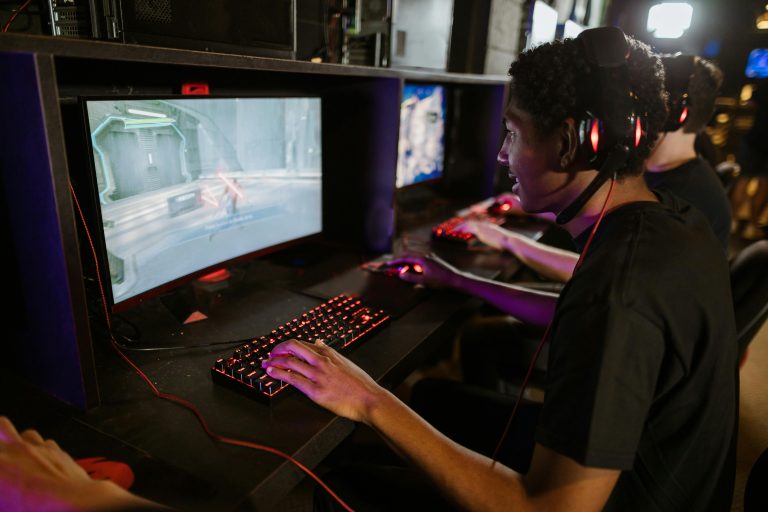
Remember when “indie game” conjured images of pixelated platformers made by a lone developer in a basement? That quaint notion is officially obsolete. As we move through 2025, a seismic shift is reshaping the gaming landscape. The once-clear line between AAA blockbuster and indie passion project has not just blurred; it has been fundamentally redrawn. Independent games are no longer the underdogs or the niche alternative—they are increasingly becoming the main event, dominating charts, capturing cultural conversations, and defining the very future of interactive entertainment. This isn’t a fluke or a passing trend. It’s the result of a perfect storm of technological democratization, evolving player tastes, and a bold new approach to creativity that the big studios can no longer ignore.
The Power of Accessible Technology and Tools
The single greatest catalyst for the indie revolution has been the radical democratization of game development tools. In 2025, creating a visually stunning and mechanically complex game no longer requires a team of hundreds or a budget of millions. Powerful, user-friendly game engines like Unity and Unreal Engine 5 offer unprecedented power to small teams, complete with vast asset marketplaces and extensive learning resources. The barrier to entry has plummeted, allowing developers to focus on innovation rather than reinventing the technical wheel.
Furthermore, the rise of AI-assisted development has been a game-changer. Indie developers are leveraging AI tools for tasks that were once prohibitively time-consuming, such as generating concept art, writing lines of code, creating dynamic soundtracks, and even populating worlds with intelligent NPCs. This doesn’t replace creativity; it supercharges it. A team of three can now achieve a level of polish and scope that would have required a team of thirty just a decade ago, allowing them to compete directly with the giants on their own terms.
A Renaissance of Creativity and Originality
While AAA studios often find themselves shackled by multi-million-dollar budgets and shareholder expectations, forcing them to rely on safe, established franchises, indie developers operate with creative freedom. This has led to a breathtaking renaissance of originality. Indie games in 2025 are not afraid to be weird, personal, or challenging. They explore unique mechanics, unconventional narratives, and artistic styles that would never get greenlit in a corporate boardroom.
Players, increasingly fatigued by the endless sequels and live-service formulas of big publishers, are hungry for these fresh experiences. They crave the emotional depth of a narrative-driven adventure, the clever twist of a novel puzzle mechanic, or the sheer artistic expression of a stylized world. Indie games fill this void perfectly. They are the source of gaming’s most exciting new ideas, often serving as the experimental proving ground for concepts that AAA studios will later adopt. In 2025, indie is where innovation lives.
The Direct Connection: Community and Agile Development
Indie developers have mastered the art of community building. Platforms like Steam, Discord, and itch.io facilitate a direct and immediate connection between creators and players. This relationship is a powerful advantage. Developers can share early builds, gather feedback in real-time, and iterate on their designs based on player input. This agile development cycle creates games that are finely tuned to audience desires.
The success of early access models exemplifies this. Games can launch, find a dedicated audience, and grow alongside their community, building immense loyalty and word-of-mouth marketing that money can’t buy. This stands in stark contrast to the traditional AAA model, where games are developed in secrecy for years and launched as a finished, unchangeable product. The indie approach is more collaborative, transparent, and ultimately, more responsive to what gamers actually want.
Evolving Business Models and Marketplace Dynamics
The way players discover and buy games has fundamentally changed, and indie titles are perfectly positioned to benefit. Subscription services like Xbox Game Pass and PlayStation Plus have become a dominant force. For a monthly fee, players have access to a vast library of games, which dramatically lowers the risk of trying something new. This has been a massive boon for indie developers, giving their games unparalleled visibility and a guaranteed revenue stream from a player base that might never have taken a chance on a standalone purchase.
Additionally, digital storefronts have refined their algorithms to promote diversity and discovery, ensuring that a well-received indie gem can surface alongside the latest Call of Duty. The playing field is more level than ever before. A great game, regardless of its budget, can find its audience through positive reviews, streaming, and social media buzz, proving that in 2025, quality is the ultimate marketing tool.
Conclusion: The Future is Independent
The dominance of indie games in 2025 is not about overthrowing AAA studios; it’s about redefining the ecosystem. The future of gaming is shaping up to be a symbiotic relationship where massive, spectacle-driven blockbusters coexist with a vibrant, endless stream of innovative independent experiences. The indies have proven that heart, creativity, and a direct line to the player community are more valuable assets than any marketing budget. They have captured the spirit of the times—a desire for authenticity, originality, and meaningful connection. As technology continues to empower creators and players continue to champion originality, one thing is certain: the heart and soul of gaming’s future will beat strongest in the independent space.






